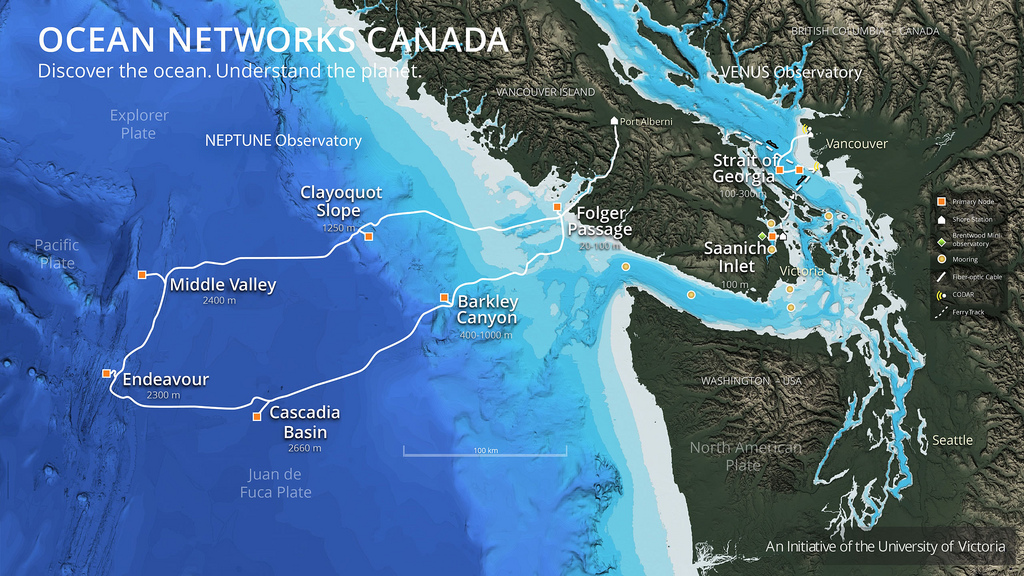Ocean Network Canada (ONC) in Partnership with the exploration vessel Nautilus, research vessel Thomas G. Thompson, and the University of Victoria have launched a three week long expedition in the Canadian northeast Pacific Ocean. As part of the expedition the E/V Nautilus and R/V Thomas G. Thompson, will visit eight sites along the Canadian west coast, and both ships are equipped with state of the art robotic vehicles connected and live streaming to the web.
The first leg of the mission which runs from August 25th to September 2nd is focused primarily on servicing ONC observation centers in the Salish sea. The primary objective for the ONC Wiring the Abyss expeditions is to install and connect the internet to the various subsea instruments and ONC observation platforms. By connecting to remote controlled instruments on the observatories, scientist are able to study interactions among geological, chemical, physical and biological processes driving earth-ocean interactions.

There have already been some new additions to the network including the installation of a 3D camera, and installing a new sensor system to measure underwater landslides.The observation network has been used for a wide-range of policy applications including earthquake and tsunami impacts, climate change and ocean management
The second leg of the expedition is set to begin September 3rd, where the R/V Thomas G. Thomas will join up with the E/V Nautilus to explore five deep sea sites offshore Vancouver Island. This part of the expedition will take the vessels across a wide variety of seafloor environments, from rocky coasts to submarine canyons, across an abyssal plain to the endeavour hydrothermal vents 300km off the Coast.

If you have already been following the live feed, so far there has been lots of murky shots of the Hercules ROV repairing the various observation centers, but we are really excited to see what they find deeper in the Pacific. We did find this video posted to the Nautilus live page, and hoping for some new exciting creature videos from leg two.
Both ships are equipped with high tech ROVs, the yellow Hercules vehicle on the Nautilus is capable of diving to 4000m (that’s two and half miles) while the Argus ROV on the Thompson can dive to 6000m (3.73 miles). Hercules is equipped with two sampling arms, six jet thrusters, high definitions cameras and videos lights, and while Argus can dive deeper it will join Hercules on the second mission as support and extra lighting in the deep sea.

The E/V Nautilus is completing a six month long expedition which started in the Gulf of Mexico. The ambitious 2015 expedition season explored gas seeps in the Gulf before transiting through Panama and spending six weeks exploring and mapping the Galapagos rift and hydrothermal vent. Before reaching Canada the vessel spent three weeks exploring the California coastline including known or possible cold seeps off San Diego and Santa Monica, also visiting a 3 year old fin “whale fall” to examine the changes over one year.
The Canadian leg of the expedition of the first of its kind for Canada and we cant wait to see what they find in the second half of the expedition starting Thursday September 3rd. The cold and foreboding deep deep sea is not home to any animals that we could conceivably keep in our aquariums, it does nurture our fascination for the rare and unusual marine life that makes exploring all marine environments truly exciting.



